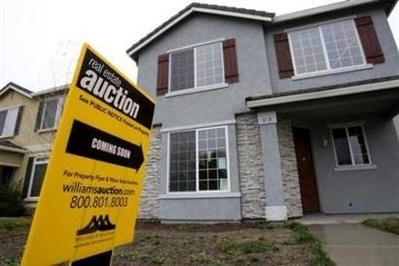New mortgage rescue goes beyond subprime
Updated: 2008-02-13 10:16
Washington -- At-risk US borrowers with all types of mortgages, not just high-cost subprime loans, could be eligible for help under a new plan involving six big lenders of the United States.
|
|
The plan, called Project Lifeline, will be announced Tuesday by the US Treasury Department and the Department of Housing and Urban Development, said a person familiar with the plan who confirmed earlier news reports about the plan but spoke on condition of anonymity because it had not yet been made public.
Against a backdrop of surging defaults and administration officials' prodding of the mortgage industry, the plan will allow seriously overdue homeowners to suspend foreclosures for 30 days while lenders try to work out more affordable loan terms.
All six are involved in Hope Now, an effort the Bush administration brokered with the mortgage industry late last year to freeze rates on some high-cost subprime mortgages for five years to aid borrowers whose teaser rates are jumping sharply higher. Since then, US Treasury Secretary Henry Paulson has urged lenders to expand that effort to cover struggling homeowners with conventional mortgages.
The new plan applies to seriously delinquent homeowners, those whose mortgages are 90 days or more past due.
With home prices falling, even some people with good credit have gotten behind on their payments. Like many subprime borrowers, they signed up for adjustable-rate mortgages that allowed them to make smaller, steady payments for several years until a higher fluctuating interest rate kicked in.
Some borrowed against their rising equity as home prices climbed, assuming they would be able to refinance or sell their homes before the higher payments began. But as prices have plummeted, many homeowners now owe more than their home is worth, and banks have tightened their lending practices, leaving even people with stellar credit struggling with higher payments.
The Hope Now alliance, which includes lenders, investors and nonprofit groups, said last week that it helped nearly 8 percent of subprime borrowers in the second half of 2007 -- more than its original estimate.
The group said it helped 545,000 subprime borrowers with spotty credit in the second half of last year, compared with its January estimate of 370,000. That works out to 7.7 percent of 7.1 million subprime loans outstanding as of September.
Among the subprime borrowers aided, 150,000 were helped through permanent-loan modifications, such as lower interest rates, while 395,000 negotiated repayment plans, which often involve a borrower getting back on track even after missing a few payments.
Consumer groups, however, point out that many borrowers still can't keep up, even after loan workouts. They say many of the borrowers in the Hope Now effort have negotiated short-term loan modifications or repayment plans, which often involve a borrower getting back on track after missing a few payments. A full-fledged refinancing at a lower rate is preferable, they say.
|
|
|
||
|
||
|
|
|
|




